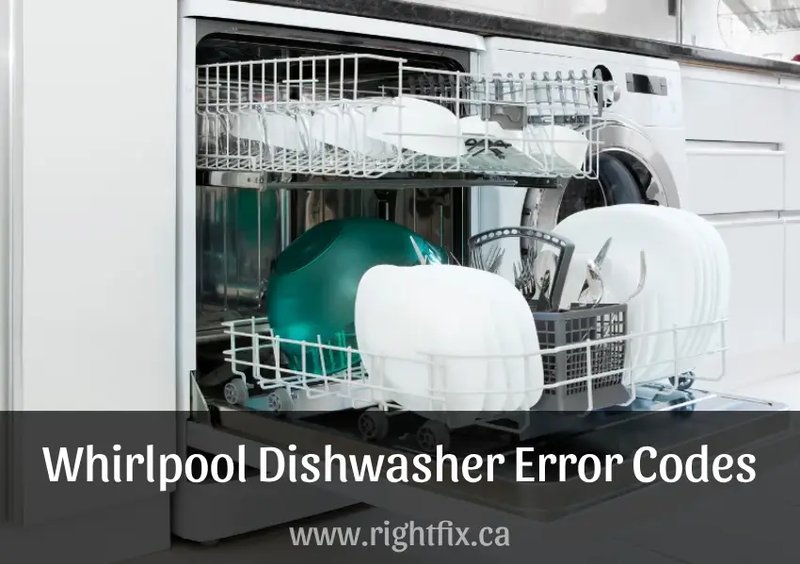
Error code E3 can seem like an intimidating mystery at first, but think of it like your dishwasher’s way of sending you a message. It’s saying, “Hey, there’s something up with my heating system!” This error usually means there’s an issue with the dishwasher not heating the water to the right temperature. No hot water means dishes might not get as clean as they should—kind of like trying to wash greasy pots in cold water by hand.
Understanding Error Code E3 and Its Causes
Alright, let’s dive into what this E3 error really means. At its core, the E3 code usually indicates a temperature problem. Dishwashers rely on hot water not just to clean effectively but also to make sure any bacteria or food residue is thoroughly removed. When the water doesn’t reach the desired temperature, the dishwasher lets you know via the E3 code. It’s like your dishwasher’s way of saying, “Hey, I’m trying, but it’s just too chilly in here!”
So, what could be causing this pesky issue? Sometimes, it’s as simple as a malfunctioning heating element. Imagine the heating element as a kettle element—its job is to heat the water. When it fails, it’s akin to expecting boil-ready water from a broken kettle. Other culprits might include a faulty thermostat, which is responsible for ensuring the water gets hot enough, or even a problem with the control board sending the wrong signals.
Now, you might wonder why these parts fail. Over time, wear and tear can take their toll. Just like your car needs regular maintenance, dishwashers do too. Mineral deposits from hard water, for instance, can accumulate on parts and cause issues if not regularly cleaned or maintained.
Warranty Considerations for Error Code E3
Here’s the deal: warranties can be a bit of a gray area. They’re kind of like insurance policies for your appliances, covering certain parts and labor costs for a specified period—usually around a year from the purchase date for most appliances. The big question is whether your E3 code issue falls under this umbrella.
Typically, manufacturer warranties for dishwashers cover defects or malfunctions in materials or workmanship. If your dishwasher is still under warranty and the error is due to a manufacturer’s defect (like a faulty heating element that shouldn’t have failed so soon), you’re probably in the clear. You simply reach out to Whirlpool’s customer service, and they’ll guide you on getting it repaired—possibly at no cost to you.
However, if the problem stems from something like improper installation, misuse, or damage that’s not related to a manufacturing fault, you might be out of luck. Imagine if you parked your car on a rocky hill, and it got damaged—that wouldn’t be something your car warranty would cover, right? The same principle applies to dishwashers.
Steps to Take if Your Dishwasher Shows Error Code E3
If you see the E3 code, your first thought might be to panic, but take a deep breath—there are steps you can follow. First, verify your warranty status. You can usually find this information in the user manual or on Whirlpool’s website by using the dishwasher’s model number. Knowing if the repair might be covered could save you some serious cash.
Next, consider troubleshooting the issue. Unplug the dishwasher for a few minutes and plug it back in. This simple reset can sometimes work wonders, like rebooting a computer that’s acting up. If that doesn’t help, check if the heating element looks worn out or if there’s any visible damage, like broken wires. But remember, safety first—if you’re not comfortable poking around inside your dishwasher, it’s best to call in a professional.
Should these steps not solve the issue, contact Whirlpool for guidance. They will direct you to an authorized service center or technician, ensuring any repairs will not void your warranty—should it still be active.
Preventive Measures to Avoid Future Errors
Prevention is always better than cure, right? Maintaining your dishwasher can help prevent errors like E3 from popping up. Regular cleaning is a simple step you can take. Think of it like brushing your teeth to prevent cavities. Every few months, run an empty cycle with vinegar or a dishwasher cleaner to break down any mineral buildup.
Another tip is to always ensure that the dishwasher is correctly loaded—not overstuffed, and with larger items not blocking the spray arms or heating element. Just like overloading a washing machine can lead to poor washing results, the same goes for dishwashers.
Lastly, keep an eye on your dishwasher’s performance. If you notice it’s not cleaning as well or it’s taking longer than usual, it could be a sign of an impending issue. Addressing small problems early can save you from bigger headaches down the line.
Now you’re equipped with all the information you need about your Whirlpool dishwasher’s E3 error code. Whether it’s under warranty or not, you’ve got the know-how to tackle the problem—or at least understand what’s going on. Best of luck, and may your dishes always come out sparkling clean!